Clear Channel UK, a leading Out of Home media and infrastructure company, has released a new study focusing on diversity in advertising and inclusive shopping experiences.
Conducted via OnePoll with 2,000 respondents, the study reveals that Gen Z is significantly more inclusive than older generations, particularly regarding race and disability representation in media.
Underrepresented Groups in Advertising
The research indicates that Gen Z considers the following groups to be greatly underrepresented in advertising:
- Race and ethnicity (42%)
- People with disabilities (40%)
- Plus-size models (36%)
- Older age groups (30%)
- Neurodiverse individuals (30%)
- LGBTQI+ community (27%)
In contrast, only one in four (24%) of all Brits believe that race is underrepresented, with disability (31%), plus-size models (28%), older generations (35%), and LGBTQI+ individuals (16%) also seen as underrepresented to a lesser extent. Despite 15-20% of the population being neurodiverse, only one in five (20%) Brits think more representation is needed for neurodiverse individuals.
Gender and Non-Binary Perspectives on Diversity
Women appear to be more in favour of diversity than men. For instance, 41% of women want to see more older ages represented in advertising compared to 29% of men. On average, 10-15% more women than men expressed interest in seeing disabilities, plus-size models, and neurodiversity in advertising. Non-binary individuals were the most inclusive, with 50% preferring representation of older ages, plus-size models, race and ethnicity, and neurodiversity.
The study highlighted common issues people find in inclusive advertising:
- Authenticity/tokenism (26%)
- Lack of normalisation (25%)
- Offensive stereotypes (25%)
- Poor representation of culture (22%)
- Failure to acknowledge cultural differences (19%)
To make advertising more inclusive and accessible, the study suggests:
- Simple messaging (38%)
- Clearer layouts (36%)
- Sensory optimisations, such as reducing sounds/brightness (34%)
- Clearer fonts (29%)
- Choice of formats, such as text, audio, video (18%)
- Muted colour schemes (16%)
Awareness and Impact of Sensory-Friendly Shopping
The study also explored awareness and impact of sensory-friendly shopping hours:
- Only 48% of Brits are aware of sensory-friendly shopping hours.
- Awareness is higher among younger generations: 18-24 (59%) and 25-34 (53%).
- Gendered awareness: non-binary (83%), women (53%), men (51%).
- Only 38% of neurodivergent people are aware of sensory-friendly shopping hours.
Major sources of discomfort for shoppers include:
- Overcrowding (61%)
- Loud music (46%)
- Bright lights (22%)
- In-store announcements (12%)
- Bright colours (11%)
People aged 45-54 are most likely to leave a store due to overcrowding (68%), followed by 25-34-year-olds (64%). Bright lights are more likely to drive out 18-24-year-olds (31%) and 25-34-year-olds (30%). Loud music is a significant issue for those 65 and older (50%) and neurodivergent individuals (49%).
Improving In-Store Shopping Experiences
Only one in five (21%) Brits are satisfied with their in-store shopping experiences. Desired adjustments include:
- Turning down music (50%)
- Limiting foot traffic (31%)
- Priority queuing (25%)
- Dimming lights (24%)
- Quieter till scan sounds (18%)
- No overhead announcements (15%)
Nine in ten Gen Z individuals believe stores should prioritise sensory adjustments. For those aged 25 and over, reducing loud music is the preferred adjustment, while limiting foot traffic is the top preference for 18-24-year-olds (39%).
Ben Hope, Marketing Director at Clear Channel UK, stated, “We strongly believe in creating inclusive environments where everyone feels valued and respected, regardless of their differences. OOH advertising is one of the best ways to achieve that. As a company, we are committed to making a positive change through our Inclusive Channel and encouraging brands to embrace diversity and normalise inclusive advertising planning. This approach not only embraces inclusive messaging but also unlocks untapped potential for reaching new audiences.”


 Whether you want to learn how to use LinkedIn, X or Facebook for marketing, or need to brush up on business skills like leadership, presentation skills or managing meetings, you will find something to enhance your professional skills with these on-demand courses.
Whether you want to learn how to use LinkedIn, X or Facebook for marketing, or need to brush up on business skills like leadership, presentation skills or managing meetings, you will find something to enhance your professional skills with these on-demand courses.